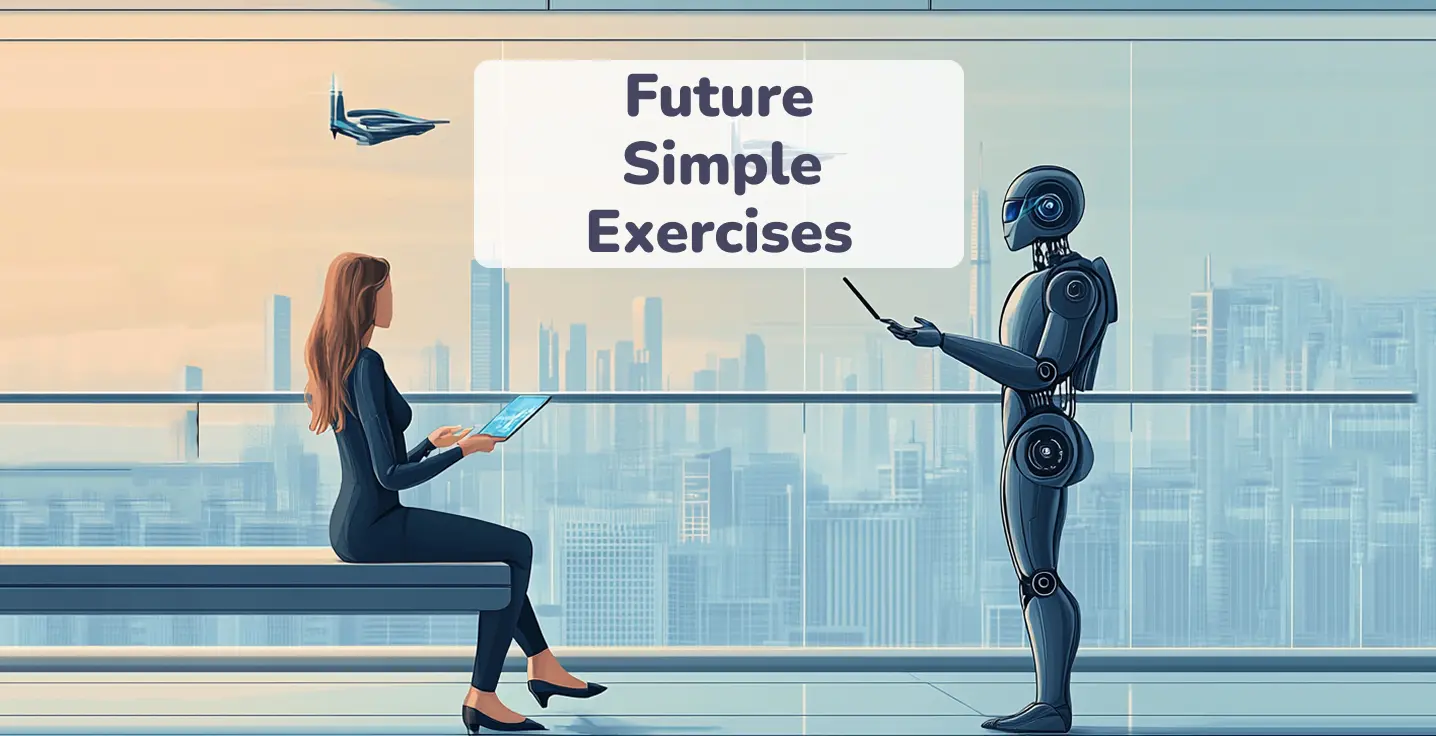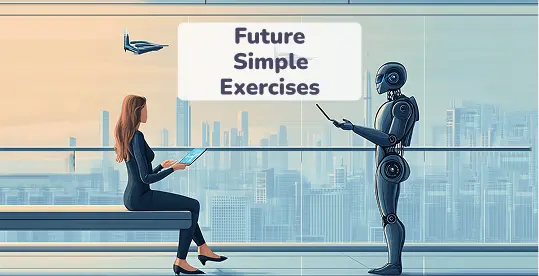Future Simple exercises
What are the best Simple Future tense exercises?
When learning through practice lessons, it’s important to choose the most effective ones to make the best use of your time and efforе. That’s why, here, with Koto English, you will review the most popular and effective ways to study English with Future Simple tense practice:
-
Fill-in-the-blank type is used by many teachers and online resources to help students learn the form of the tense: will + verb in the base form. Simply, you complete some sentences with the correct form of the verb.
It will help you remember the word order (sentence structure) and give you more confidence in both solving test papers and daily conversations. For example:
I will ___ you at your house.
If you study hard today, I ___ you your favorite meal.
-
Questioning is another form of practicing in a Future Simple worksheet, as it’s an important part of everyday speaking. You will learn to ask questions, form sentences in the correct order, and answer them using the Future Simple. These types of sentences provide more context.
___ you go to the cinema?
-
Negative sentences are used for statements formed with will and not or won’t for more informal communication. In the future, it will help you to speak about expectations that will not happen.
I ___ go to the store. It’s your turn.
-
Role-play dialogs help you practice real-life conversations based on everyday situations. Future Simple tense exercises in such form help you to practice conversations about plans, promises, and so on.
A: I will go to his party next evening. What about you?B: I will stay at home.
Thus, you will study language in an effective and fun way, getting more fluent while keeping your motivation and not getting bored with grammar that may be complex.
What’s included in a standard Future Simple test?
Many types of Simple Future exercises can be useful in everyday studying. Typically, they are sorted into a few groups according to learners’ level of knowledge. Here, you will find activities for A1-B1 students. For example, there are:
-
Multiple choice is when you need to choose the correct answer with less effort. It’s the most common Simple Future tense exercise which is adapted for elementary school students and new learners.
She will ___ her grandmother later.
a) visiting
b) visited
c) visit -
Sentence correction is a more challenging type of Future Simple tense practice, as it requires you to analyze the sentence, identify the mistake, and correct it.
It’s so cold here. I will be close the window.It’s so cold here. I will close the window.
-
Tense transformation is used as an exercise for the Future Simple tense, helping with more complicated sentences and demonstrating your ability to solve difficult tests, identify time markers, recognize the forms of other tenses, and more. For example:
Change the Present Simple to Future Simple:
Before:
She goes to the swimming pool every Sunday.After:
She will go to the swimming pool on Sunday.
How to pass the Future Simple practice: tips and advice?
There are many moments about testing, and we will share the ones that work for almost every student, regardless of how much they study and what their level is.
Tip 1: Read the Future Simple tense test carefully.
That is how you will not lose any details about the task you need to complete. Check it a few times and be sure to understand the assignment.
Tip 2: Practice through mistakes.
Our professors always told us that if you make no mistakes, then you are not doing anything. They are a part of progress, and making mistakes every day means you work daily. Plus, with our Future Simple tense exercises with answers, you can improve your next try.
Tip 3: Take notes about new vocabulary.
To get the most out of our practice, the advice is to learn new words to expand your speaking skills. It will also help you in the future to study other sentences.
What are the most common mistakes in Future Simple quizzes?
When it comes to fill-in-the-blank, students often have issues with adding articles or confusing a and an, as well as grammar rules when they put -s to verbs. To avoid these mistakes, you need to pay attention to what the task says, read carefully every word, and remember that you are solving a Simple Future exercise.
Another part is about incorrect word order in negative sentences and questions. For example, some of the learners write:
|
Will go she to the party with us?
|
Will she go to the party with us?
|
Also, when transforming sentences, some students can miss parts of the sentence that are important for the context. Our advice is to make sure you write everything down when taking a Future Simple tense test.
What to learn next after completing the Future Simple activities?
Wow, you have completed every exercise! What’s next? You can keep learning English grammar with materials about the Future Continuous tense to understand the difference from the Future Simple and learn how to talk about actions happening in the future.




